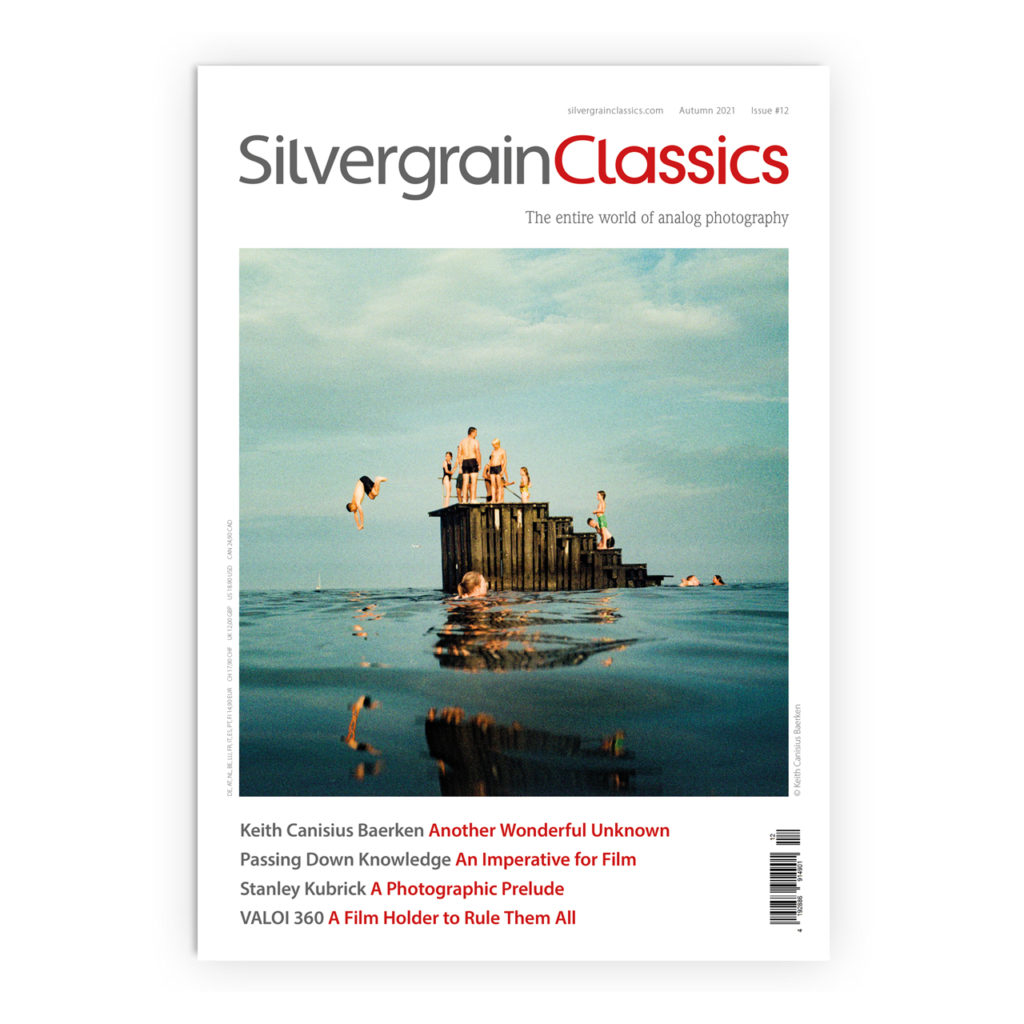Anthotype Emulsions, Volume 2 by Malin Fabbri
“Anthotype Emulsions – Volume 2” by Malin Fabbri has just been released. See the results of 139 images submitted by artists worldwide. And, if you are looking for a resource of Anthotype emulsions, then this book is exactly what you need!
By Christopher Osborne.
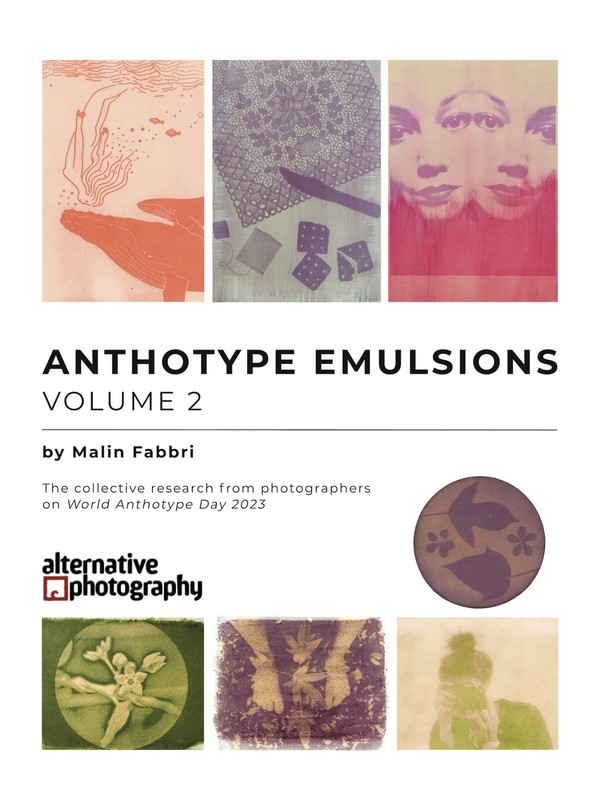
The cover of Anthotype Emulsions, Volume 2 by Malin Fabbri.
Malin Fabbri has promoted alternative photography by creating and editing AlternativePhotography.com for over twenty-three years. When we spoke about last year’s World Anthotype Day, it was winter and the nights have already drawn in. This time we are talking during the day and her apartment is lit by autumn sunshine. She is in her native Sweden.
Malin started AlternativePhotography.com as a way to distribute the paper she had written as part of her MA degree. Photographers and artists she had been involved with during the research quickly asked her to display their work. Some also provided papers or articles they had written themselves, or tips that they had found when working with alternative photography. The site started to take shape and has grown organically. It is now home to close to one thousand articles on alternative photographic processes and displays the work of over two hundred artists. Access to learning resources and galleries is free although a moderately priced subscription is required to show artist portfolios.
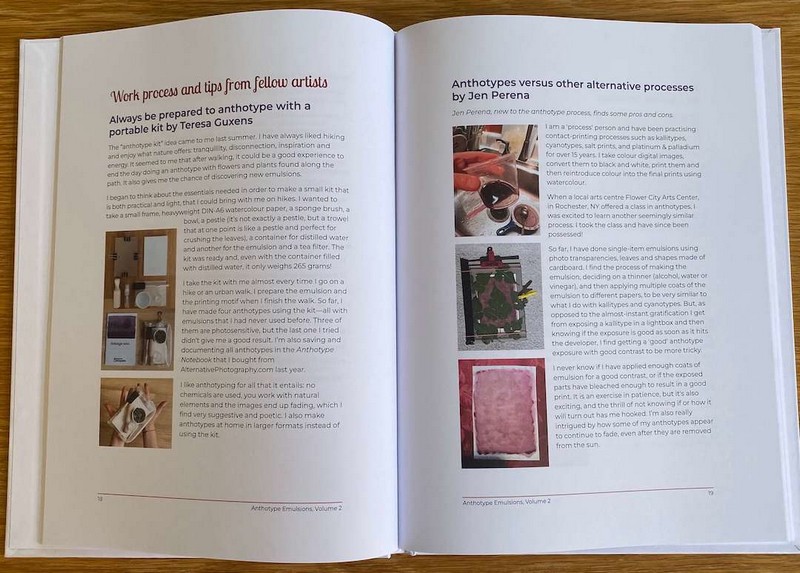
Anthotype Emulsions – Volume 2 – Work processes and tips from a selection of participating artists.
The companion Facebook group now has more than fifty thousand members and five administrators that ensure that the group is spam-free. Malin attributes the growth in alternative photography to a backlash to the digital. This has resulted in a desire to make things away from a computer environment and to use one’s hands. “Alternative photography is a bit like slow cooking”, she says. “The objective is not to have a meal – or a print – as quickly as possible. The journey is part of the experience. Lockdown also contributed to rapid growth in interest in the community as people had more time on their hands to be creative”.
Today we are discussing “Anthotype Emulsions – Volume 2” (https://www.alternativephotography.com/anthotype-emulsions-2/) which has just been released. This book records the results of the 139 images submitted by artists from around the globe in response to the second World Anthotype Day open call. This year’s “World Anthotype Day” was on 19 August 2023. This open call is deliberately un-themed to make artists focus on trying to find as many different kinds of plants or pigments as possible, to grow the “database” of emulsions. The Anthotype Emulsions Volume 1 and Volume 2 contain all the work from the two years and will continue to grow to make it easier for artists to find new plants and pigments to try and encourage them to experiment with new ones.
Malin says that she has been amazed by the overwhelmingly enthusiastic response. One entrant managed to submit an entry even though she had been evacuated because of wildfire!
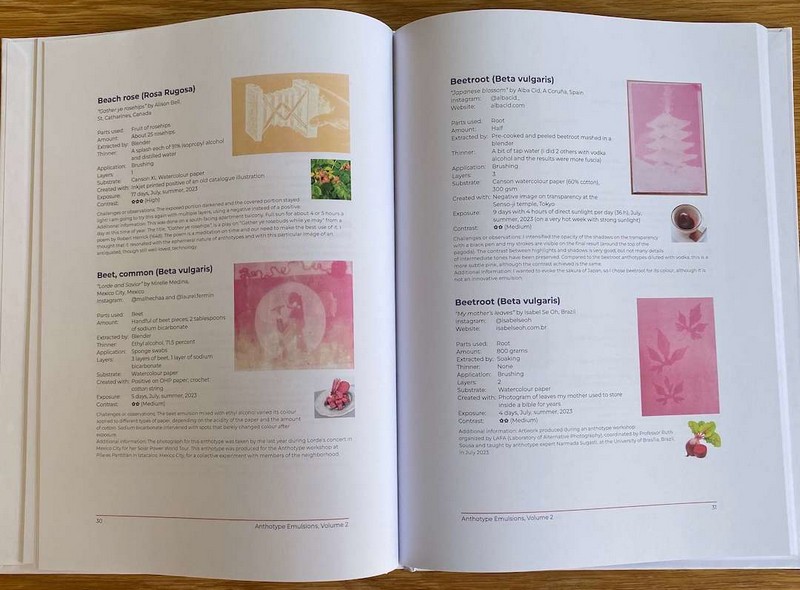
Anthotype Emulsions – Volume 2. Images made with Beech Rose and Beetroot.
“Anthotype Emulsions – Volume 2” by Malin Fabbri is an unusual book. On one level it contains the prints made by one hundred and thirty-nine artists and photographers who participated. In this sense, it is an art book. If you are looking for inspiration, viewing other people’s work is a useful place to start.
The book starts with the background of the project, the people behind it, and a short history of the process.
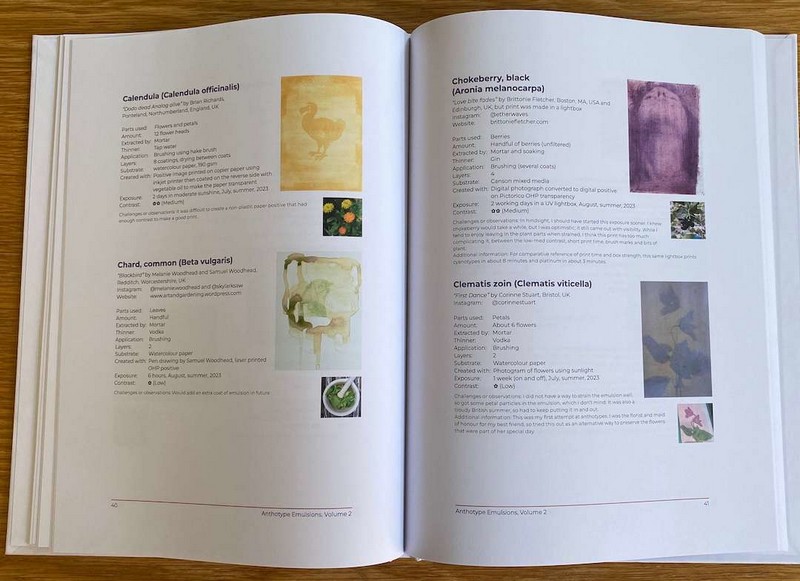
Anthotype Emulsions – Volume 2. Images made with Calendula, Chard, Chokeberry and Clematis.
“Anthotype Emulsions – Volume 2” by Malin Fabbri is an unusual book. On one level it contains the prints made by one hundred and thirty-nine artists and photographers who participated. In this sense, it is an art book. If you are looking for inspiration, viewing other people’s work is a useful place to start.
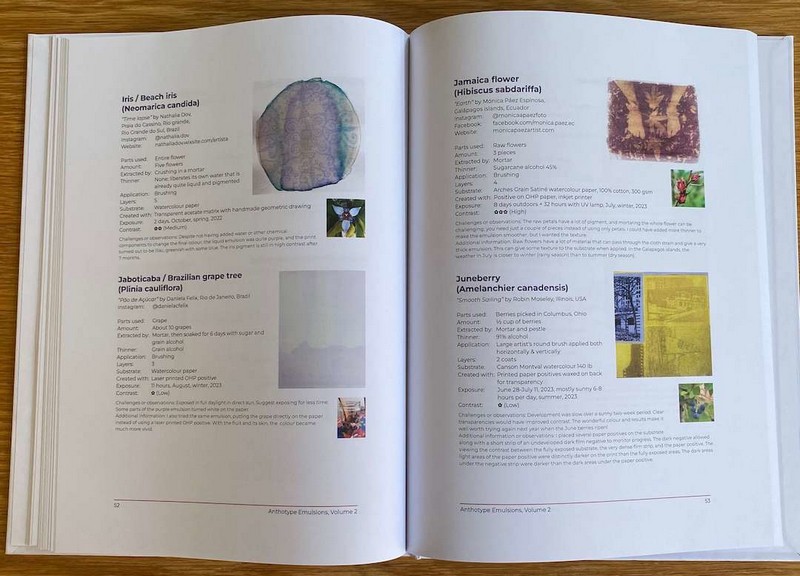
Anthotype Emulsions – Volume 2. Images made with Iris, Jaboticaba, Hibiscus and Juneberry.
The book starts with the background of the project, the people behind it, and a short history of the process.
The next section is a handy guide to making anthotypes. This section explains the process at a level that a complete novice can understand. Topics covered range from how to make a digital negative, making the emulsion, how to apply the emulsion, exposing the print, and how to record your result digitally.
This is followed by interesting explanations of how 6 contributors made their emulsions. Down to earth, and easy to read this section has some great tips that will help others succeed.
The main section of the book details the materials and processes that participants used to make the accompanying image.
The resulting emulsion database will help you to find the plants and additives that are used to make the colour palette that you have in mind.
Many entries also contain additional observations about the process that was used, and these are very informative. This database means that the book can also be used as a reference guide.
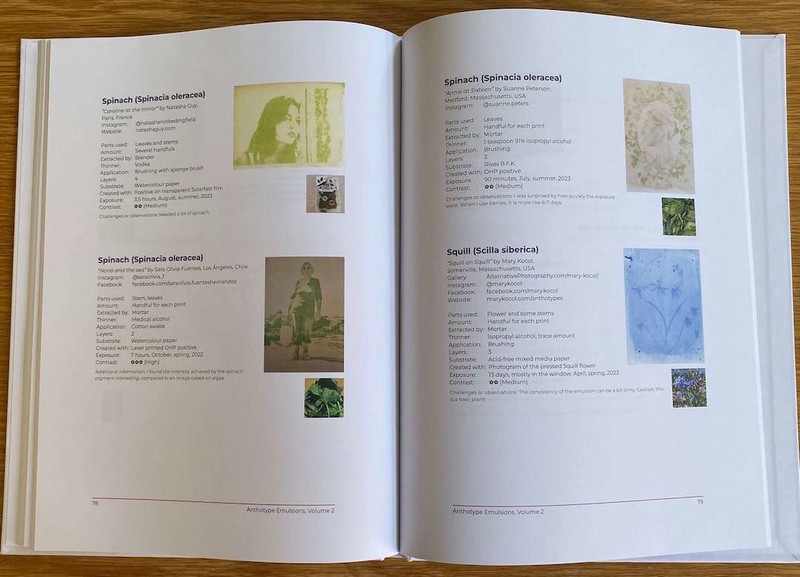
Anthotype Emulsions – Volume 2. Images made with Spinach and Quill.
Anthotypes are usually exposed in sunlight, so many of the southern hemisphere contributors made their entries earlier in the year. This technique requires patience and while many of the exposures lasted a few hours, the record was recorded by American artist Francis Schanberger whose exposure took 10 months! The number one tip is to start early!
The feedback from participants from all over the world indicated just how many people had been hampered by poor weather. As a result, the 2024 World Anthotype Day will be held on 24 August 2024 and submissions will be accepted from 1 August 2024. The Anthotype for 2024 can be made any time between September 2023 and August 2024 to allow for both bad weather and seasonal variations around the globe.
I asked Malin what advice she would give to would-be participants. “Take notes about what you did. I have been guilty of not writing down how I made an image, thinking that I will remember”, Malin recalls. “A month later, I have no idea of what I did”. Of course, this will also enable you to contribute by sharing your experience with others in the database.
There are now two volumes in the “Anthotype Emulsion” series. Malin explains that she hopes to run this open call again next year and that the results will be incorporated into Volume 3.
“Anthotype Emulsions – Volume 2” by Malin Fabbri is available from Amazon and Lulu. It is available in pdf, Kindle, softback and hardback formats. Prices start from EUR 14 for the pdf version and the cheapest hardback version is available for EUR 32. Full details on how to purchase this valuable guide can be found at https://www.alternativephotography.com/anthotype-emulsions-2/
And if you want to build a collection, “Anthotype Emulsions – Volume 1” can be found at https://www.alternativephotography.com/anthotype-emulsions-1/
You can find details on other alternative photographic processes at https://www.alternativephotography.com
Also see Instagram @alternativephotography.com and Facebook here.
Images © Malin Fabbri 2023.
You might also be interested this article on Malin Fabbri’s Anna Atkins Tribute Diary. See https://silvergrainclassics.com/en/2023/06/anna-atkins-tribute-journal-get-inspired/
You can find an index to the entire collection of SilvergrainClassics magazines here https://silvergrainclassics.com/en/magazine/index-of-articles/

